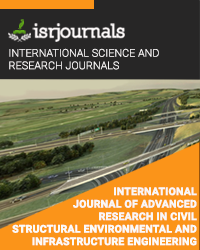sustainable production of bioelectricity from coovum river using mfc
S.Dinesh Kumar,K.Jagadesh
Published in International Journal of Advanced Research in Civil,Structural,Environmental and Infrastructure Engineering and Developing
ISSN: 2320-723X Impact Factor:1.7 Volume:3 Issue:1 Year: 11 March,2017 Pages:423-428

Abstract
Today we are witnessing a global energy crisis due to huge energy demands and limited resources. Non renewable energy sources are depleting and renewable energy sources are not properly utilized .There is an immediate need for search of alternate way for energy generation .Microbial Fuel Cell(MFC) technology, which uses micro organisms to transform chemical energy of organic compounds into electricity is considered a promising alternative. Extensive studies have corroborated new insights into MFC, which show that a wide array of carbon sources including waste can be employed using a variety of microbes. Consequently , microbial transformation of waste using noval bio remediation strategies such as MFC for energy generations is considered as an efficient and environmentally benign approach. This paper deals with critical review of anaerobic bacterias and wastes that can be employed for bioenergy generation, microorganisms involved, power output, challenges and pit holes of MFC technology.
Kewords
Microbial Fuel Cell, Sustainable energy source, Renewable electricity production capacity,Was
Reference
1. Logan B E, Hamelers B, Rozendal R, Schroder U, Keller J, Freguia S, Aelterman P, Verstraete W & Rabaey K, Microbial fuel cells: methodology and technology, Environ Sci Technol, 40 (2006) 5181-5192. 2. Wrighton K C & Coates J D, Microbial fuel cells: plug-in and power-on microbiology, Microbes, 4 (2009) 281-287. 3. Park D H & Zeikus J G, Electricity generation in microbial fuel cells using neutral red as an electronophore, Appl Environ Microb, 66 (2000) 1292-1297. 4. Oh S E & Logan B E, Hydrogen and electricity production from a food processing wastewater using fermentation and microbial fuel cell technologies, Water Res, 39 (2005) 4673-4682. 5. Du Z, Li H & Gu T, A state of the art review on microbial fuel cells: A promising technology for wastewater treatment and bioenergy, Biotech Advances, 25 (2007) 464-482. 6. Watanabe K, Recent developments in microbial fuel cell technologies for sustainable bioenergy, J Biosci Bioeng, 106 (2008) 528-536. 7. Ahmed Ebrahim Abu El-Maaty Behiry (2012), Evaluation of steel slag and crushed limestone mixtures, as subbase material in flexible pavement, Ain Shams Engineering Journal , Issue 12, volume 3, pp. 887-889.. 8. Montgomery D.G and Wang.G (1992), Instant-chilled steel slag aggregate, cement and concrete research. Vol. 22, pp. 755-760. 9. Mahmoud Ameri, Ali Behnood ( 2012 ), Laboratory studies to investigate the properties of CIR mixes containing steel slag as a substitute for virgin aggregates, Construction and Building Materials, Issue 26 ,pp. 475–480. 10. Perviz Ahmedzade, Burak Sengoz (2009), Evaluation of steel slag coarse aggregate in hot mix asphalt concrete, Journal of Hazardous Materials, Volume 165, Issues 1–3, 15 June 2009, pp. 300-305. 11. Aelterman P, Rabaey K, Pham HT, Boon N, Verstraete W (2006) Continuous elec-tricity generation at high voltages and currents using stacked microbial fuel cells. Environ Sci Technol 40:3388–3394 12. Aldrovandi A, Marsili E, Paganin P, Tabacchioni S, Giordano A (2009) Sustainable power production in a membrane-less and mediator-less synthetic wastewater microbial fuel cell. Biores Technol 100:3252–3260 13. Allen RM, Bennetto HP (1993) Microbial fuel-cells: electricity production from carbohydrates. Appl Biochem Biotech 39:27–40 14. K. Tweed, “Fuel Cell Treats Wastewater and Harvest Energy,” Scientific American, 2012. 15. Y. Ahn and B. E. Logan, “Domestic Wastewater Treatment Using Multi-Electrode Continuous Flow MFCs with a Separator Electrode Assembly Design,” Applied Micro- biology and Biotechnology, Vol. 97, No. 1, 2013, pp.409-416. doi:10.1007/s00253-012-4455-8 16. Z. Du, H. Li and T. Gu, “A State of the Art Review on Microbial Fuel Cells: A Promising Technology for Wastewater Treatment and Bioenergy,” Biotechnology Advances, Vol. 25, No. 5, 2007, pp. 464-482. doi:10.1016/j.biotechadv.2007.05.004

